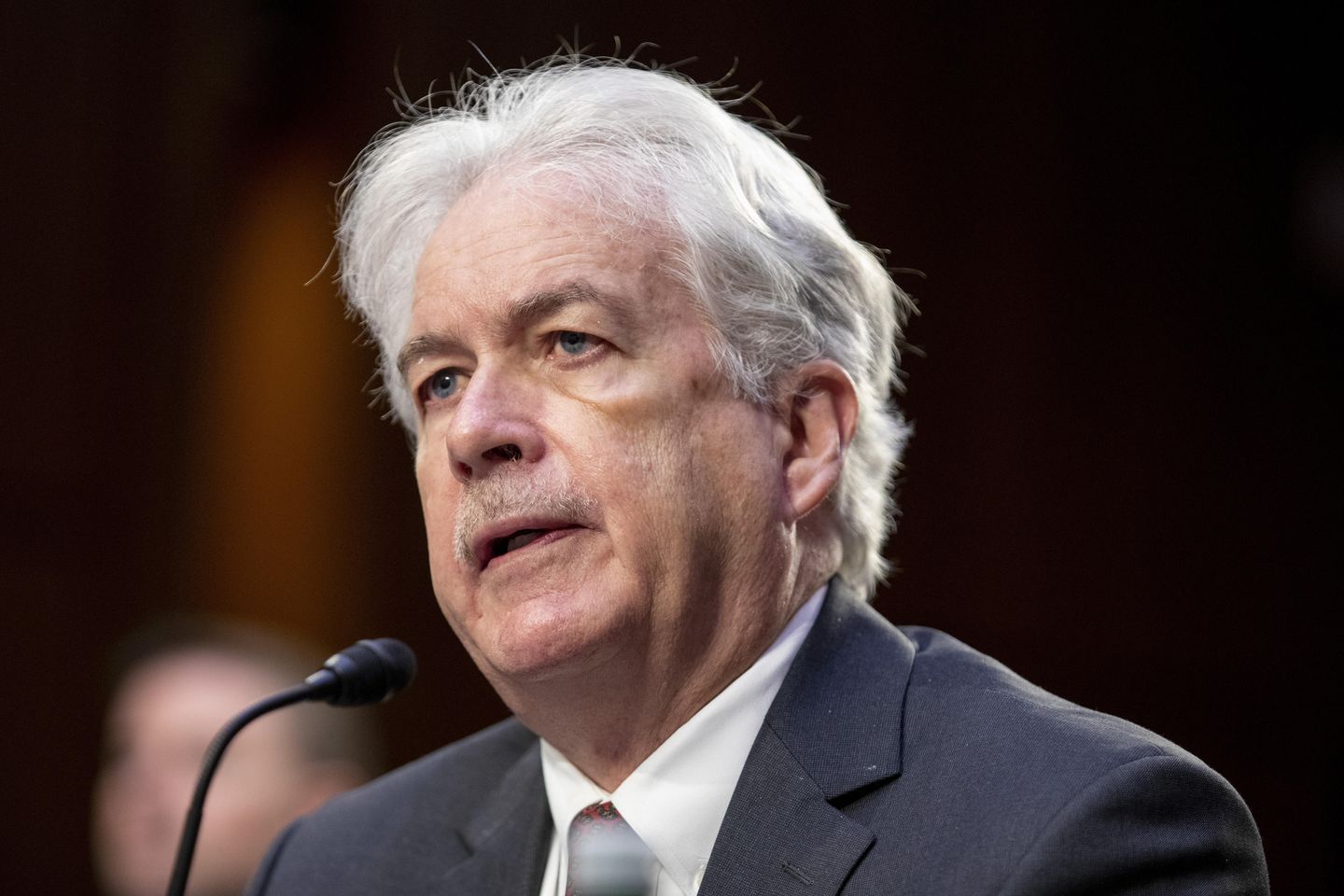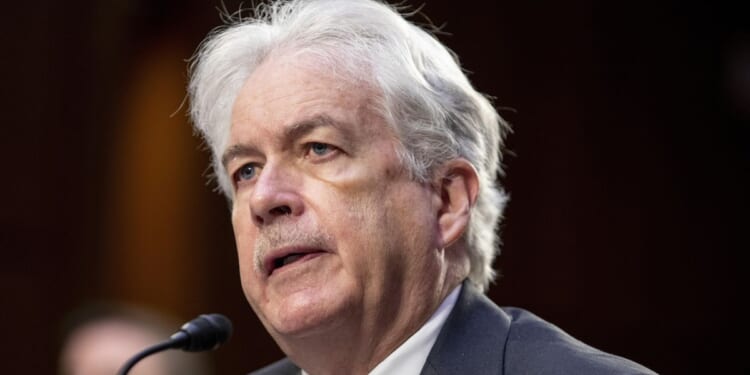
NEWS AND ANALYSIS:
CIA Director Bill Burns has revealed in a major new journal article that his agency has retooled its analysis and operations and doubled its budget to focus on the rising threat from China.
Mr. Burns, writing in the journal Foreign Affairs, described China as a bigger long-term threat than Russia, and the CIA under his direction in the past two years has reorganized and redirected funds to China as a top priority.
“Accordingly, the CIA has committed substantially more resources toward China-related intelligence collection, operations and analysis around the world — more than doubling the percentage of our overall budget focused on China over just the last two years,” Mr. Burns said. “We’re hiring and training more Mandarin speakers while stepping up efforts across the world to compete with China, from Latin America to Africa to the Indo-Pacific.”
The CIA’s budget is secret, but outside analysts estimate its annual budget to be more than $15 billion.
Chinese President Xi Jinping, after accumulating more power than any leader since Mao Zedong, is now engaged in increasingly threatening actions, the CIA chief stated.
“Xi’s growing repression at home and his aggressiveness abroad, from his ‘no limits’ partnership with [Russian President Vladimir] Putin to his threats to peace and stability in the Taiwan Strait, are impossible to ignore,” Mr. Burns said.
American economic and trade ties with China have created “critical vulnerabilities and serious risks” for U.S. national security and prosperity, Mr. Burns said.
“The COVID-19 pandemic made clear to every government the danger of being dependent on any one country for life-saving medical supplies, just as Russia’s war in Ukraine has made clear to Europe the risks of being dependent on one country for energy,” he said.
The best solution is to “de-risk” and diversify supply chains and protect technology while investing in industrial capacity, Mr. Burns said.
Pentagon hosts book talk on right-wing terrorism
The Pentagon this week held a book talk for officials on the threat of right-wing terrorism — despite a recent Defense Department study that concluded the presence of right-wing extremists in the military appears to be a phantom threat.
On Monday, the office of the undersecretary of defense for policy sent out a reminder notice for a “virtual brown-bag book talk” by authors Bruce Hoffman and Jacob War to be held the next day.
“Their new book, ‘God, Guns, and Sedition: Far-Right Terrorism in America’ was released earlier this month,” the notice said. “This is the first of what we hope will be a series of brown-bag events featuring internal and external speakers.”
The book talk drew criticism from some Pentagon officials who worry the program, hosted by the Office of Special Operations and Low-Intensity Conflict, furthers the narrative that the military is allegedly riddled with right-wing extremists.
Lisa Lawrence, a Pentagon spokeswoman, said the book talk was part of a series that seeks to “contribute to the professional development of [the Pentagon’s] workforce.”
“The engagement was not about extremism in the military,” she said, adding that future talks will cover a range of views and topics on national security.
“Participation in the speaker series is voluntary, and colleagues from all different viewpoints are encouraged to share them during these conversations,” she said in an email to Inside the Ring.
Defense Secretary Lloyd Austin ordered a study in 2021 after news reports said some service members took place in the Jan. 6 riot at the U.S. Capitol. Mr. Austin said he was seeking “greater fidelity” on the scope of the problem extremism in the military.
Last month, the Institute for Defense Analyses released its report based on information obtained from June 2021 to June 2022. The report found that the military is not full of violent extremists, as most who have served in uniform know well.
The IDA study “found no evidence that the number of violent extremists in the military is disproportionate to the number of violent extremists in the United States as a whole.”
Pentagon data also showed “fewer than 100 substantiated cases per year of extremist activity by members of the military in recent years.” Extremist and gang-related activity in the military resulted in less than 20 courts-martial cases since 2012, the report said.
The report also debunked the idea that military service members took part in the Jan. 6 riot in large number. Of the 700 federal cases related to the riot, fewer than 10 involved active-duty military personnel.
The IDA study also noted that military personnel are confused about terminology defining “extremist” activity and that the push by Pentagon officials under the Biden administration to promote the claims could lead to polarization.
“In the absence of a clear and consistent message, there is a risk that misinterpretations could lead to a significant division in the force along political and ideological lines, with some members of the military believing that they are being targeted for their views,” the report said.
“IDA found reason to believe that the risk to the military from widespread polarization and division in the ranks may be a greater risk than the radicalization of a few service members.”
The IDA study followed a report by the administration’s Countering Extremist Activity Working Group that revealed the cases of prohibited extremist activity among service members were rare. In a force of more than 2.1 million active duty and reserve troops, there were only 100 cases.
Critics say the effort to find right-wing extremists in the military reflects ongoing efforts by left-wing ideologues in the Biden administration who have argue “white supremacy” is a serious threat to the American society.
President Biden said last year in a speech that white supremacy is the “most dangerous terrorist threat” to the nation. In a campaign speech Jan. 9 courting black voters, he called white supremacy “a poison that has for too long haunted this nation.”
A report produced by the staff of Sen. Marco Rubio of Florida and Rep. Chip Roy of Texas opposing what the Republican lawmakers called “woke” policies in the military argued that fights over political ideology are weakening the U.S. military.
“Our military’s singular purpose is to ‘provide for the common defense’ of our nation,” Mr. Marco and Mr. Roy said in a statement. “It cannot be turned into a left-wing social experiment. It cannot be used as a cudgel against America itself. And it cannot be paralyzed by fear of offending the sensibilities of Ivy League faculty lounges or progressive pundits.”
Chinese hackers inside U.S. infrastructure
A group of senior U.S. intelligence and security officials revealed to Congress on Wednesday that Chinese military hackers have penetrated critical infrastructure control networks in the country as preparation for future sabotage.
Harry Coker, the White House national cyber director, stated in testimony to the House Select Committee on the Chinese Communist Party that Chinese spies are continuing to carry out “significant” cyberattacks to steal secrets from government and private sector networks. But the Chinese cyber threat, the topic of the committee hearing, is more significant, Mr. Coker said in testimony submitted to the panel.
The main threat is posed by a People’s Liberation Army hacker group dubbed Volt Typhoon, which is “pre-positioning itself on U.S. critical infrastructure systems to potentially conduct disruptive and potentially destructive attacks in the event of a conflict,” Mr. Coker said.
Volt Typhoon is not focused on financial gain, espionage or stealing state secrets. Instead, the group is working to achieve “deep access into critical infrastructure networks to put them at risk,” he said.
The Chinese military hackers are suspected in the penetration of critical communications networks on the Pacific island of Guam, a key U.S. military hub that would take part in any future U.S. defense of Taiwan. Last year, cyber sleuths in the government and Microsoft uncovered computer code in telecommunications networks on Guam that were later traced to Volt Typhoon.
The Chinese hackers have been observed by U.S. intelligence agencies targeting multiple critical infrastructure networks for future attacks that would potentially jeopardize the lives of Americans, FBI Director Christopher Wray said. One Chinese hacking group penetrated the networks of a major U.S. transportation hub, the bureau chief said, without elaborating.
National Security Agency head Gen. Paul Nakasone, who is also commander of the military’s Cyber Command, said the Chinese hackers’s work “is not acceptable,” adding that defending against the infrastructure penetrations is “our top priority.”
Along with increased Chinese cyber threats, both NSA and Cyber Command have become more capable at countering the Chinese actions.
“U.S. Cybercom and NSA are using our capabilities and partnerships to deny the PRC opportunities, frustrate their strategic efforts and systematically eradicate intrusions,” Gen. Nakasone said, using the acronym for People’s Republic of China.
Jen Easterly, director of Homeland Security’s Cybersecurity and Infrastructure Security Agency (CISA), said the extensive Chinese cyber intrusions are targeting infrastructure networks mostly owned by private sector companies and utilities.
“Based on our insights from working with victims of these intrusions and industry partners with unique visibility into these threats, PRC cyber actors are almost certainly capable of launching cyberattacks that could disrupt critical infrastructure services within the United States, including against oil and gas pipelines and rail systems,” she stated.
Currently CISA is working with multiple U.S. critical infrastructure owners to hunt down Chinese hackers and cut off intrusions, she said.
• Contact Bill Gertz on X at @BillGertz.












